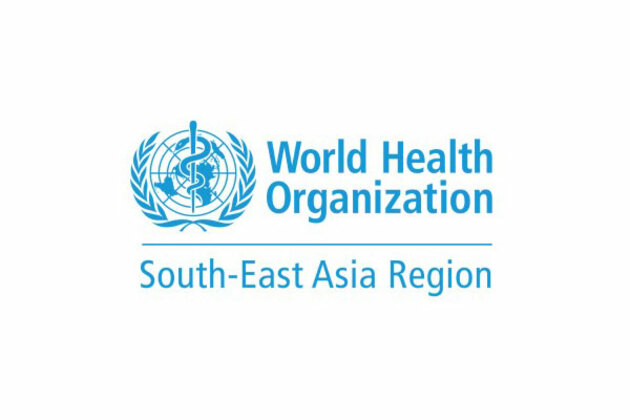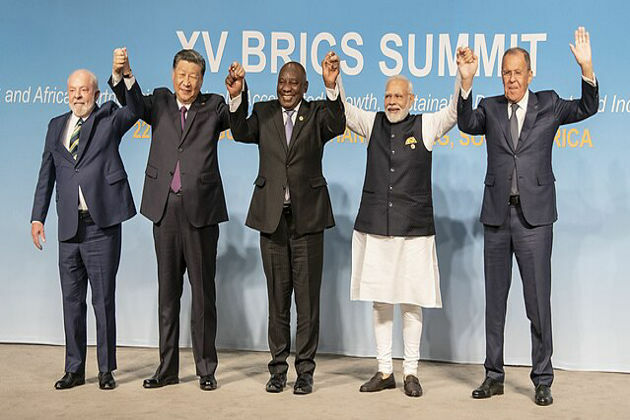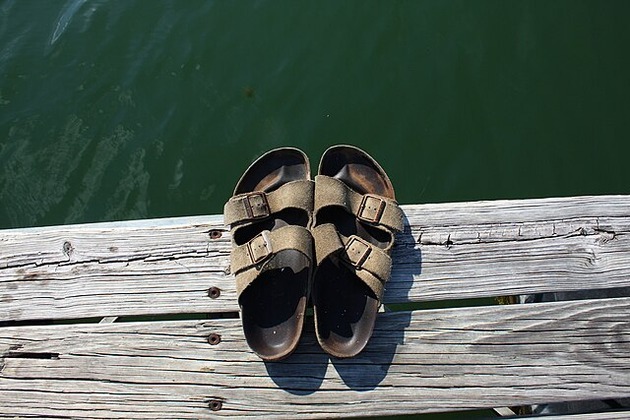18 million more girls in South Asia could suffer from anaemia by 2030: WHO South East Asia
ANI
09 Jul 2025, 19:37 GMT+10

Colombo [Sri Lanka], July 9 (ANI): Anaemia remains one of South Asia's most persistent health and equity challenges, affecting nearly half of all adolescent girls and women in the region. A statement highlighting the wide-ranging influence and impacts of anaemia was released by the World Health Organisation-SEA.
'Now, experts warn that without concerted action, 18 million more girls and women could become anaemic by 2030, adding to the current burden of 259 million', the World Health Organisation (WHO) South East Asia said in a statement.
As per WHO-SEARO, in response, for the first time, governments from seven South Asian countries have come together to take collective action against anaemia.
From July 9-11, the South Asian Association for Regional Cooperation (SAARC), the Government of Sri Lanka, UNICEF, WHO, and other partners are hosting the 'Nourishing South Asia | Reducing Anaemia in Adolescent Girls and Women' regional conference in Colombo, Sri Lanka.
Notably, the event brings together over 100 policymakers, researchers, health experts, and development leaders to shape a shared regional framework and country action plans to address this widespread yet overlooked health crisis. The conference will also launch a new South Asia Anaemia Academic Alliance, aimed at rallying scientific leadership and closing research gaps to drive long-term solutions.
'Anaemia remains a public health concern in Sri Lanka, affecting 18.5 per cent of women of reproductive age and 14.6 per cent of children under five. We are stepping up our nutrition programme, particularly in districts with high rates of anaemia, focusing on women and children. The government is committed to expanding these efforts nationwide through collaborative actions across multiple sectors. We are eager to strengthen our partnership with UNICEF, WHO, and other UN agencies. Organising this conference highlights our position as a regional leader in tackling anaemia,' said Dr Harini Amarasuriya, Prime Minister of Sri Lanka, as noted by WHO in its statement.
WHO-SEA highlighted that anaemia occurs when the body lacks sufficient healthy red blood cells to carry oxygen, resulting in people feeling weak, tired, and more susceptible to illness. For girls and women, anaemia can make it more challenging to stay in school, work or care for their families, particularly due to heavy periods. Lastly, anaemia during pregnancy poses a risk to both mother and baby.
It further underscored that anaemia is not just a health problem. It is a warning sign of deeper issues, such as poor nutrition, infections, and inequality. The poorest, particularly women and children, are most affected, exacerbating the existing crisis of poor health, malnutrition, lost opportunities, and gender inequality.
'In South Asia, our young people and mothers stand at the heart of our demographic and development goals. Ensuring that they are healthy, nourished and empowered is not just a moral imperative, it is a strategic investment in the future of our societies,' said Md Golam Sarwar, Secretary General of SAARC.
'Although many countries have national policies in place to tackle anaemia, their health systems still face significant challenges that hinder progress. These include inadequate healthcare infrastructure to deliver services, difficulties for healthcare workers in reaching isolated communities, and limited programme scopes that fail to meet the needs of all women and girls, particularly those in the poorest and most marginalised areas. Furthermore, there is a lack of comprehensive data collection to inform effective interventions', the statement said.
'This is a clarion call for action. When half of all adolescent girls and women in South Asia are anaemic, it's not only a health issue, but also a signal that systems are failing them. We know what to do and we know how to do it. Now is the time for governments to take the lead and scale up solutions,' said Sanjay Wijesekera, Regional Director of UNICEF South Asia.
It further observed, 'Anaemia doesn't just affect women and girls. It is a major cause of low birth weight, with South Asia accounting for 40 per cent of the global cases of babies born with low birth weight. Anaemia hampers children's ability to get enough oxygen, affecting their growth and development. This can lead to fatigue, delayed learning, and increased susceptibility to illness.'
'Anaemia is both preventable and treatable. We know the causes: poor nutrition, iron deficiency, infections, chronic diseases, and pregnancy-related complications. A more nuanced and evidence-driven approach is needed. Tackling anaemia is not just about health; it is foundational to the well-being of our women and girls. It is as much an economic and social investment as a health investment,' said Saima Wazed, Regional Director of WHO South-East Asia.
The overall number of anaemia cases has remained largely unchanged for the last two decades. However, progress is possible, as Nepal is demonstrating. By investing in frontline workers who can travel to remote communities, prioritising an equity approach, integrating programs such as health and nutrition and implementing a multi-sectoral nutrition plan, Nepal has consistently achieved significant results over the past decade, the statement underlined.
It further expanded, 'The prevalence of anaemia in women of reproductive age in Nepal has declined equitably by 7 per cent (41per cent in 2016 to 34 per cent in 2022), with a similar impact even in women belonging to the poorest households. WHO projections forecast that by 2030, anaemic women in Nepal will decline to 27 per cent. The projections estimate that the drop will be the most significant in Nepal's Karnali province (11 per cent), and the anaemia prevalence will be lowest among women from the poorest households (19 per cent).'
'India and Pakistan are also seeing promising local results where empowered health workers and data-driven programmes are in place. Bangladesh is linking adolescent nutrition to schools and social services through new integrated platforms. In Sri Lanka, progress is also commendable, with a prevalence rate of 17 per cent among women under 25 years of age as of 2022', the statement noted.
Emphasising that anaemia is not just a health crisis, WHO-SEA said that it is a marker of inequality and it stifles potential, productivity and entire economies, costing the South Asia region USD 32.5 billion each year. Yet, the return on investment is undeniable: every USD1 invested in maternal anaemia interventions yields an economic return of USD 9.50.
Ending anaemia takes leadership, but also teamwork. Governments must lead, but communities, health workers, schools, and families all have a role to play. With robust health systems, trained health workers, more innovative use of data, and more inclusive and coordinated action across sectors, girls and women can better fulfil their potential and contribute to stronger communities and more prosperous nations, the statement noted in conclusion. (ANI)
 Share
Share
 Tweet
Tweet
 Share
Share
 Flip
Flip
 Email
Email
Watch latest videos
Subscribe and Follow
Get a daily dose of Chicago Chronicle news through our daily email, its complimentary and keeps you fully up to date with world and business news as well.
News RELEASES
Publish news of your business, community or sports group, personnel appointments, major event and more by submitting a news release to Chicago Chronicle.
More InformationBusiness
SectionBRICS issues rebuke on trade and Iran, avoids direct US criticism
RIO DE JANEIRO, Brazil: At a two-day summit over the weekend, the BRICS bloc of emerging economies issued a joint declaration condemning...
BP appoints ex-Shell finance chief Simon Henry to board
LONDON, U.K.: This week, BP appointed Simon Henry, former Shell finance chief, to its board as a non-executive director effective September...
FedEx, UPS step up as Canada Post loses market share in strikes
OTTAWA, Canada: With Canada Post struggling to maintain operations amid labour unrest, rivals like FedEx and UPS are stepping in to...
U.S. stocks steady Tuesday despite tariffs turmoil
NEW YORK, New York - U.S. and global markets showed a mixed performance in Tuesday's trading session, with some indices edging higher...
Beijing blamed for covert disinformation on French fighter jet Rafale
PARIS, France: French military and intelligence officials have accused China of orchestrating a covert campaign to damage the reputation...
Birkenstock steps up legal battle over fakes in India
NEW DELHI, India: Birkenstock is stepping up its efforts to protect its iconic sandals in India, as local legal representatives conducted...
Illinois
SectionAfter stepping up 'everywhere you looked,' Twins host Cubs again
(Photo credit: Brad Rempel-Imagn Images) The Minnesota Twins enjoyed a near-perfect series opener against the Chicago Cubs. The...
Guardians seek to close series against Astros with a sweep
(Photo credit: Troy Taormina-Imagn Images) With Houston closer Josh Hader having last worked on Saturday and the Astros set for an...
Royals aim to complete rare home sweep in matchup vs. Pirates
(Photo credit: Peter Aiken-Imagn Images) Left-hander Kris Bubic is headed to his first All-Star Game next week, but he hasn't been...
Blue Jays look to close out White Sox, extend win streak
(Photo credit: David Richard-Imagn Images) A 10-game winning streak has vaulted the Toronto Blue Jays to the top of the American...
Blue Jays strike early, top White Sox to win 10th straight
(Photo credit: Kamil Krzaczynski-Imagn Images) Vladimir Guerrero Jr. had two hits and two RBIs, Davis Schneider homered and Chris...
Twins slug 3 homers in eighth, power past Cubs
(Photo credit: Brad Rempel-Imagn Images) Ryan Jeffers went 3-for-4 with a homer and three RBIs, and the Minnesota Twins used a six-run...













